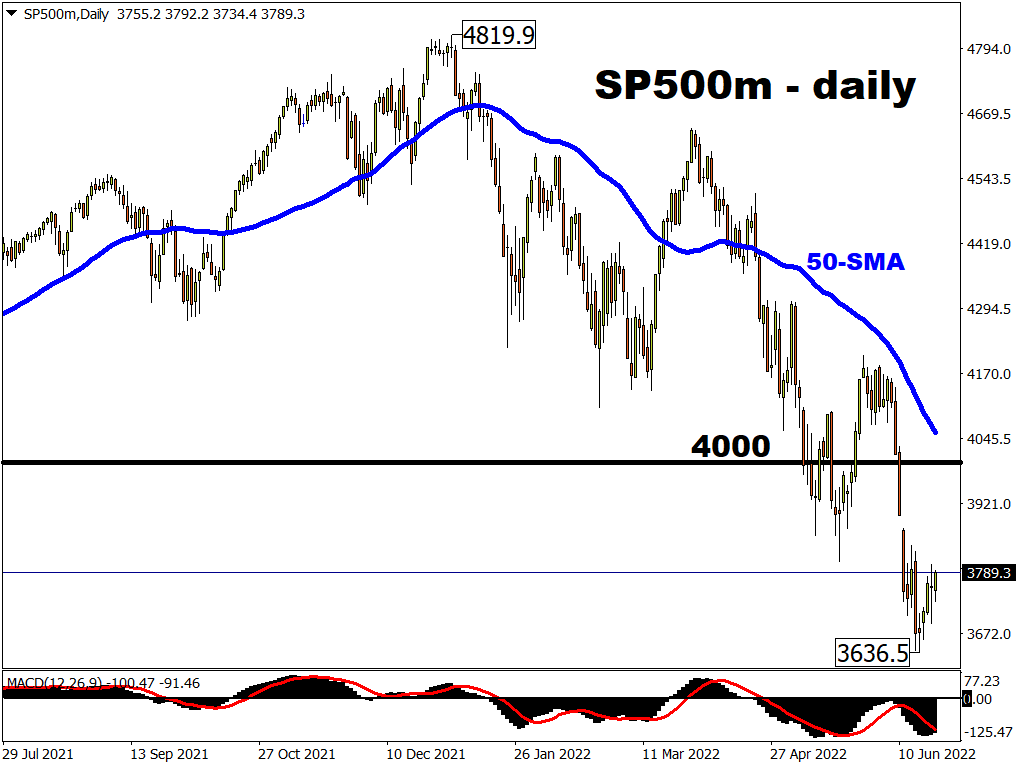By ForexTime
Things are looking gloomy in the world.
The prices of goods and services are skyrocketing at a pace not seen in several decades, making it more expensive to go about our daily lives.
At the same time, more than 60 central banks around the world have already raised their respective interest rates, and are set to continue doing so for the rest of this year … and beyond.
This combo of red-hot inflation + global policy tightening could ultimately lead to a significant drop in demand/consumption, rising unemployment, and slowing economic growth, or worse, a recession.
What is a recession?
You’ve likely heard this word being used a lot more of late.
We certainly have been using it significantly more in our daily articles.
A popular method to confirm a ‘recession’ = when an economy shrinks for two consecutive quarters.
So be on the look out for negative GDP figures.
However, given that GDP figures are backward-looking, such a definition implies that we’ll only know a recession has arrived after it’s happened.
Even the NBER (National Bureau of Economic Research), which is seen as the foremost authority in identifying a ‘recession’ while using a broader range of data, says they can take anywhere from 4 to 21 months before determining that a recession has started.
Also, it’s hard to predict when a recession will happen, though that hasn’t stopped forecasts already being made.
- Tesla CEO Elon Musk as well as former New York Fed President Bill Dudley both say a US recession is “inevitable”.
- Goldman Sachs places a 30% chance of a recession sometime in 2023, while Deutsche Bank’s CEO, Christian Sewing, and Citigroup analysts think that likelihood is higher at 50%.
- Even Fed Chair Jerome Powell just yesterday conceded that a US recession is “certainly a possibility”.
Recession fears are already playing out across global financial markets:
- There has been bouts of yield curve inversion – a popular signal for a looming recession.
A yield curve inversion means that investors are more willing to park their money in the safe hands of the US government for longer (e.g. 10 years), for fear of economic turbulence over the shorter-term (e.g. 2 years).
Markets are expecting to see further yield curve inversions in the months ahead.
- Risk assets, ranging from stocks to cryptos, have taken a beating! In time of heightened economic uncertainty, investors are a lot less willing to make risky bets.
The S&P 500, an index which is used to measure the overall performance of US stocks, has lost over 20% so far this year, meeting the definition of a ‘bear market’.
The S&P 500 could fall further, potentially testing the low-3000 regions for support.

- Even oil has been unwinding some of its stellar gains of late. Investors and traders fear that a recession would mean less consumption/demand for the commodity, hence lower prices.
While fundamental forces (that’s supply and demand) should still suggest that oil can stay elevated, prices could still dip back into sub-$100 levels as traders and investors continue assessing the likelihood of a recession.

Which asset could outperform?
Safe havens are assets that promise to protect one’s wealth in times of great fear.
And gold has time and again proven its worth as a safe haven.
However, before a recession arrives, the Fed wants to send interest rates a lot higher and suck out more money from the economy to help bring down inflation.
Hence, gold could continue languishing in these sub-$1900 levels under the weight of these incoming Fed rate hikes for the rest of 2022, before potentially pushing back higher as the prospects of a recession looms closer.

 Article by ForexTime
Article by ForexTime
ForexTime Ltd (FXTM) is an award winning international online forex broker regulated by CySEC 185/12 www.forextime.com

